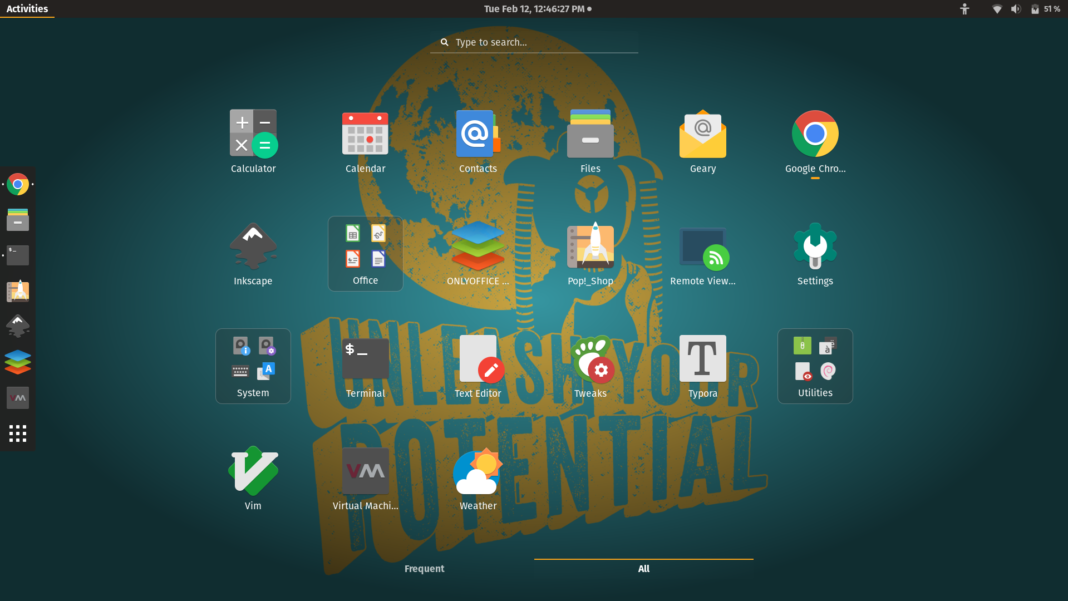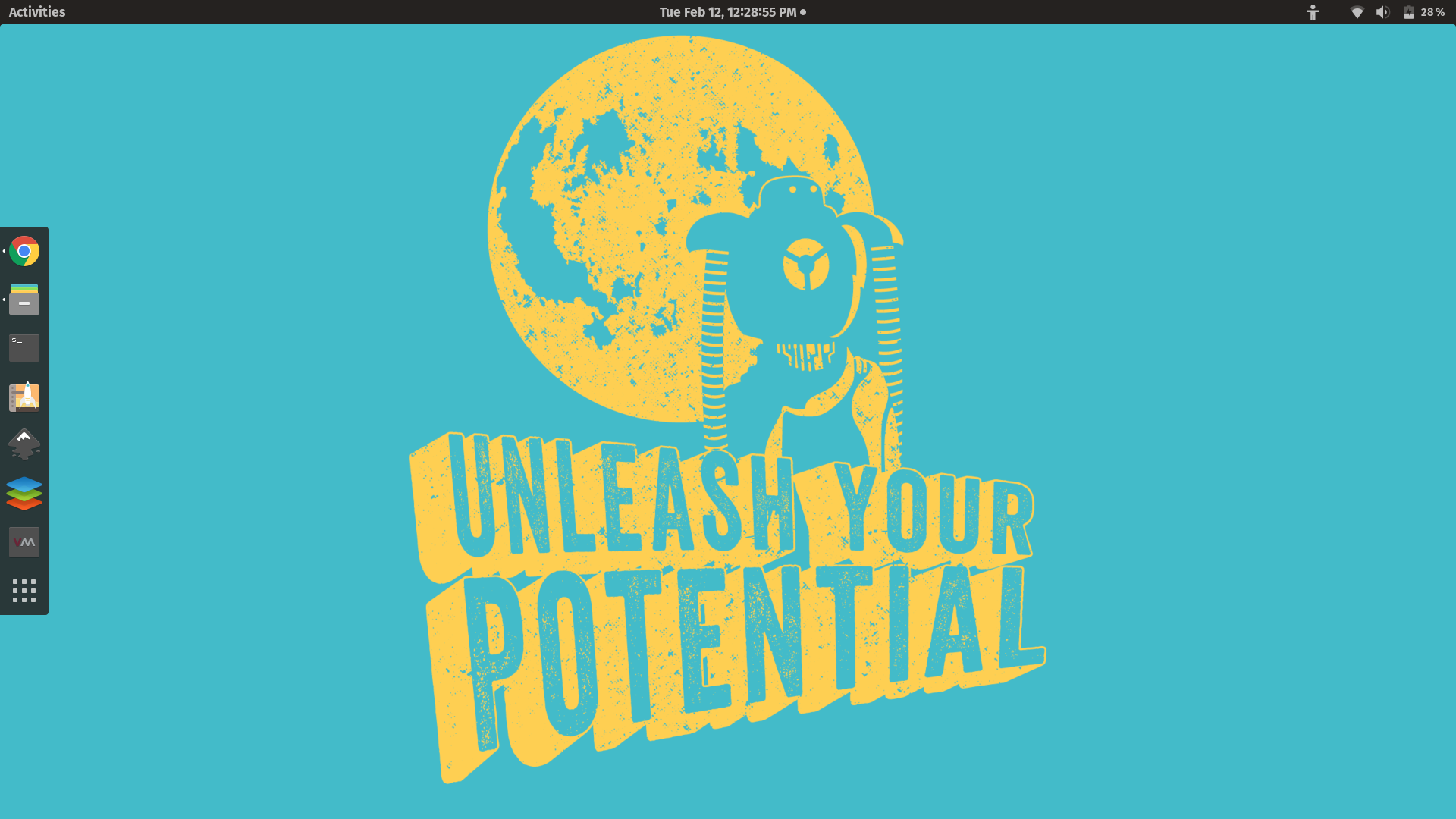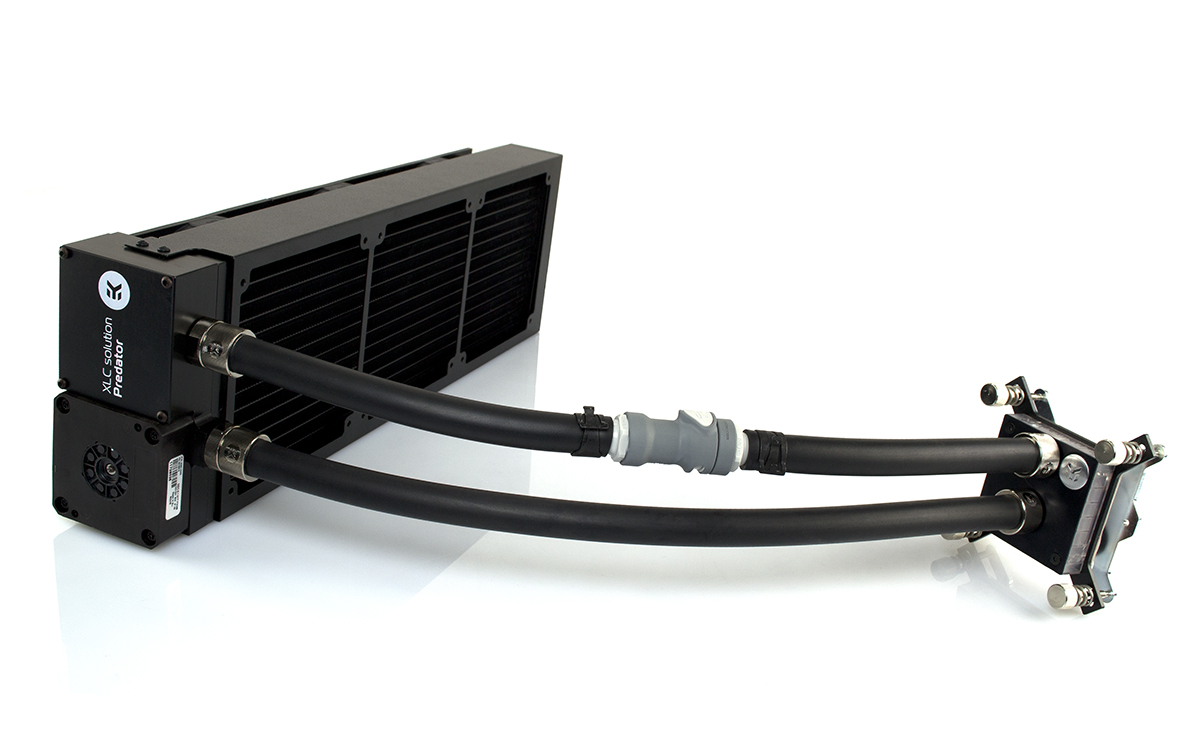My daily PC configuration consists of two SSDs. One for any Linux based OS that is currently installed and other for Windows. This is how I ran my PC for months and whenever I need to change the OS I reboot the PC and change the preference when GRUB asks. But Windows updates were getting more and more annoying and kept breaking my PC more often than I could put up with. So a few days ago after the latest update catastrophe I had had enough of it. So I decided to remove Windows altogether and switch my entire workflow to Pop!_OS – a Ubuntu based OS made by system76.
I performed a clean installation where I wiped the whole drive and installed Pop!_OS. The process was very simple. Select the drive, press install and done. Even easier than installing Windows.
Driver installation was easy as the ISO file of Pop!_OS came with pre-installed NVIDIA driver.
The Look
I have used many distros. They were available with GNOME, XFCE, LXQT, and KDE, however, I have found the GNOME to be my favorite.
The side dock disappears when some apps are used as I have turned on intelligent auto-hide.
The Pop!_OS 18.04 is the same as Ubuntu 18.04, but there is a difference in aesthetic. Gone are the orange colors and outdated icons of Ubuntu. Pop!_OS uses the Pop theme with Pop icons where everything looks modern. The app menu is also pleasant to look at:
The overall theme is a combination of sky blue, white or dark based on your preference and a tiny bit of orange and green. Very aesthetically pleasing, very simple and intuitive.
OS internals
As mentioned Pop!_OS is just Ubuntu under a pretty face, but lets still cover come things. Firstly the OS is based currently on Linux Kernel 4.18. More specifically, we can find out which person by typing uname -a command into the terminal:
~$uname -a
4.18.0-15-generic #16~18.04.1-Ubuntu x86_64 x86_64 x86_64 GNU/Linux
The default package manager is APT. Simple OS updating is done with sudo apt update && sudo apt upgrade command.
The OS is very stable as you would expect and so far I haven’t experienced any kind of crash or instability.
What I would also like to point out is that unlike Ubuntu, snapcraft is not installed by default. You have to install it using command sudo apt install snapd. If you are not familiar with what snapcraft is, read here.
Software support
Pop!_OS is based on Ubuntu and Ubuntu is based on Debian. That means that every software made for Ubuntu or Debian is available for Pop!_OS. All the packages, libraries and drivers are compatible. And as always with linux, if there isn’t a package for your OS, you can compile from source.
Personal modification
While using the OS I have made several customizations to make it easier for me to use the OS. Some of them are:
- Dash to dock – a gnome extension which gives you control over the dock’s behavior.
- GNOME tweaks – app that gives you the ability to control gnome. I have used it to change the font size to 1.25 and to add minimize and expand application window keys, as they were disabled by default.
Summary
Pros:
- Stable
- Supported well – huge amount of packages, drivers and libraries
- Nice looking – one of the nicest GNOME versions out there. Eye-pleasing aesthetics and attention to small details are amazing.
Cons:
- By default the dock appears only when you click activities button in the upper left corner and for someone new to the GNOME and Linux it may be confusing at first to figure out how to make the dock be permanently present.
Using Pop!_OS has been awesome so far and I will continue to use it as my daily driver. For anyone that is coming from Windows, the transition should be seamless.














Would you care to share some of the things that were broken on your Windows install?
There were some dependency issiues with .dll libraries. The OS kept saying they werent present even when i installed them(again). Also with every update the OS just randomly got blue screen of death. This happened many times and even after the re-install.
Comments are closed.